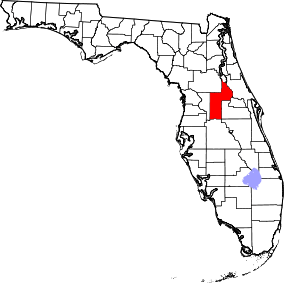Paisley, Florida
| Paisley, Florida | |
|---|---|
| CDP | |
 Location in Lake County and the state of Florida | |
| Coordinates: 28°59′15″N 81°32′13″W / 28.98750°N 81.53694°WCoordinates: 28°59′15″N 81°32′13″W / 28.98750°N 81.53694°W | |
| Country |
|
| State |
|
| County |
|
| Area | |
| • Total | 3.4 sq mi (8.9 km2) |
| • Land | 3.3 sq mi (8.5 km2) |
| • Water | 0.1 sq mi (0.4 km2) |
| Elevation | 72 ft (22 m) |
| Population (2000) | |
| • Total | 734 |
| • Density | 215.9/sq mi (82.5/km2) |
| Time zone | Eastern (EST) (UTC-5) |
| • Summer (DST) | EDT (UTC-4) |
| ZIP code | 32767 |
| Area code(s) | 352 |
| FIPS code | 12-53850[1] |
| GNIS feature ID | 0306187[2] |
Paisley is a census-designated place (CDP) in Lake County, Florida, United States. The population was 734 at the 2000 census. It is part of the Orlando–Kissimmee Metropolitan Statistical Area. Paisley is home to Boy Scout Camp La-No-Che on the north shore of Lake Norris which at times during the summer and other special events has a larger population than the CDP itself.
The main arteries of the town of Paisley is Lake County Road 42 and Maggie Jones Road.
Paisley is also host to the Toronto Argonauts' pre-season training and free agency camp.
History
A post office called Paisley has been in operation since 1886.[3] The community was named after Paisley, in Scotland.[4]
On the morning of February 2, 2007, a tornado touched down in the community and was blamed for at least 14 deaths.
Geography
Paisley is located at 28°59′15″N 81°32′13″W / 28.98750°N 81.53694°W (28.987370, -81.536972).[5]
According to the United States Census Bureau, the CDP has a total area of 3.4 square miles (8.8 km2), of which, 3.3 square miles (8.5 km2) of it is land and 0.2 square miles (0.52 km2) of it (4.37%) is water.
Demographics
As of the census[1] of 2000, there were 734 people, 317 households, and 217 families residing in the CDP. The population density was 223.7 people per square mile (86.4/km²). There were 396 housing units at an average density of 120.7/sq mi (46.6/km²). The racial makeup of the CDP was 97.41% White, 0.68% Native American, 0.54% Asian, 1.23% from other races, and 0.14% from two or more races. Hispanic or Latino of any race were 1.63% of the population.
There were 317 households out of which 24.6% had children under the age of 18 living with them, 53.3% were married couples living together, 10.1% had a female householder with no husband present, and 31.5% were non-families. 24.0% of all households were made up of individuals and 11.7% had someone living alone who was 65 years of age or older. The average household size was 2.32 and the average family size was 2.73.
In the CDP the population was spread out with 22.8% under the age of 18, 4.6% from 18 to 24, 25.9% from 25 to 44, 24.0% from 45 to 64, and 22.8% who were 65 years of age or older. The median age was 43 years. For every 100 females there were 97.8 males. For every 100 females age 18 and over, there were 91.6 males.
The median income for a household in the CDP was $29,000, and the median income for a family was $38,500. Males had a median income of $29,732 versus $26,111 for females. The per capita income for the CDP was $12,798. About 14.0% of families and 17.4% of the population were below the poverty line, including 21.1% of those under age 18 and 15.8% of those age 65 or over.

References
- 1 2 "American FactFinder". United States Census Bureau. Retrieved 2008-01-31.
- ↑ "US Board on Geographic Names". United States Geological Survey. 2007-10-25. Retrieved 2008-01-31.
- ↑ "Lake County". Jim Forte Postal History.
- ↑ Clark, Alisson (May 10, 1999). "What's in a name?". Ocala Star-Banner. pp. 3C. Retrieved 7 June 2015.
- ↑ "US Gazetteer files: 2010, 2000, and 1990". United States Census Bureau. 2011-02-12. Retrieved 2011-04-23.
